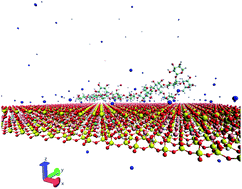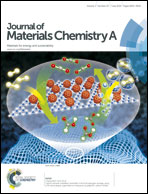Molecular dynamics simulation of strong interaction mechanisms at wet interfaces in clay–polysaccharide nanocomposites†
Abstract
Bio-composites comprised of the polysaccharide xyloglucan (XG) and montmorillonite (MTM) clay has potential as a ‘green’ replacement of conventional petroleum-derived polymers in the packaging industry. These materials have been shown to possess excellent material properties, even in high relative humidity. Although interfacial interaction between XG and MTM, and the molecular structure of XG can be identified as key parameters for the complex formation process and the resulting tensile properties, these properties are usually difficult to address using experimental methods. Here we use molecular dynamics (MD) simulations to study the adsorption of fully atomistic models of both native and chemically modified XG to MTM clay surfaces in explicit water. We show that the driving force for adsorption is a favorable change in enthalpy, and furthermore that native XG adsorbs stronger than modified XG. This highlights the importance of molecular structure details to molecular adhesion. The present study provides insights into the molecular scale adsorption mechanisms and can therefore help in designing routes for further improvements of bio-composite materials.


 Please wait while we load your content...
Please wait while we load your content...